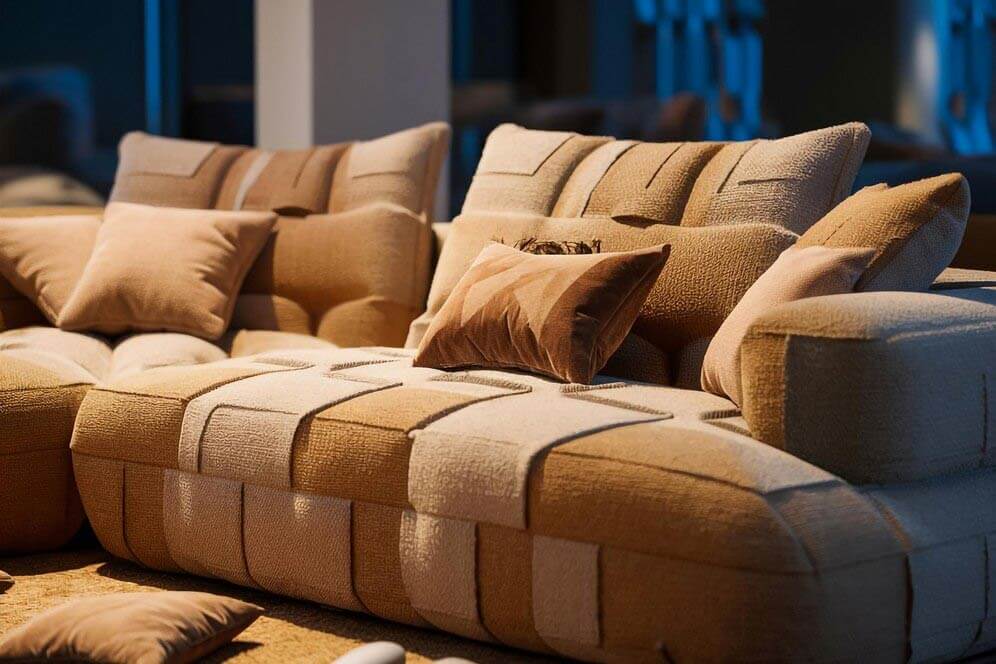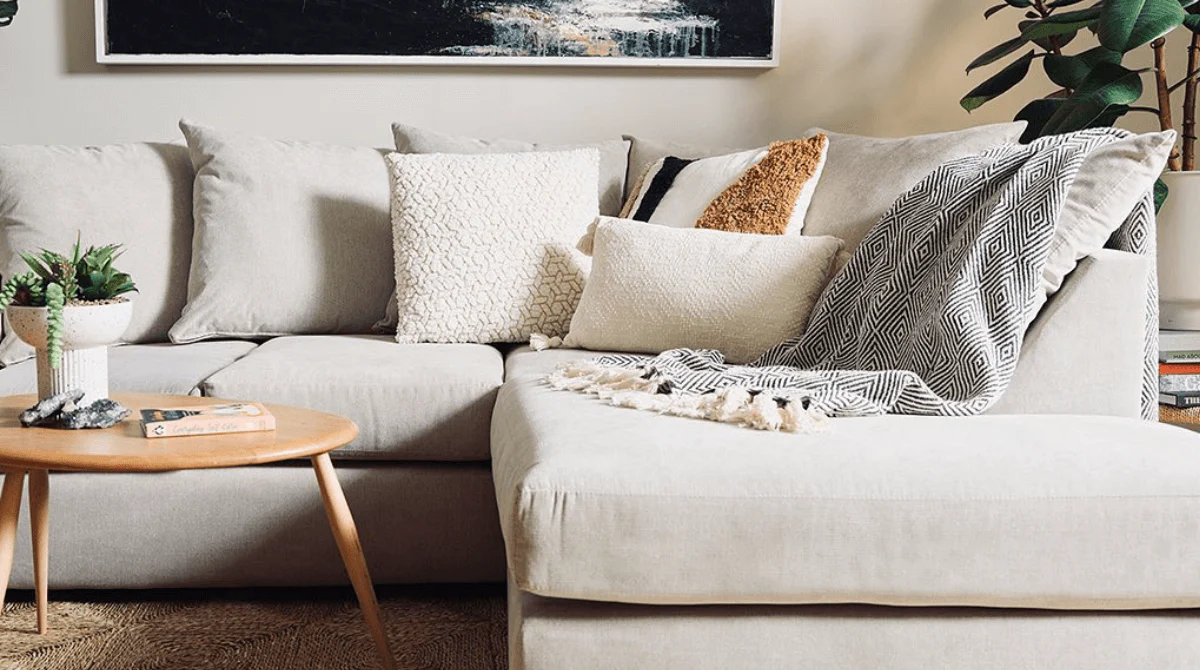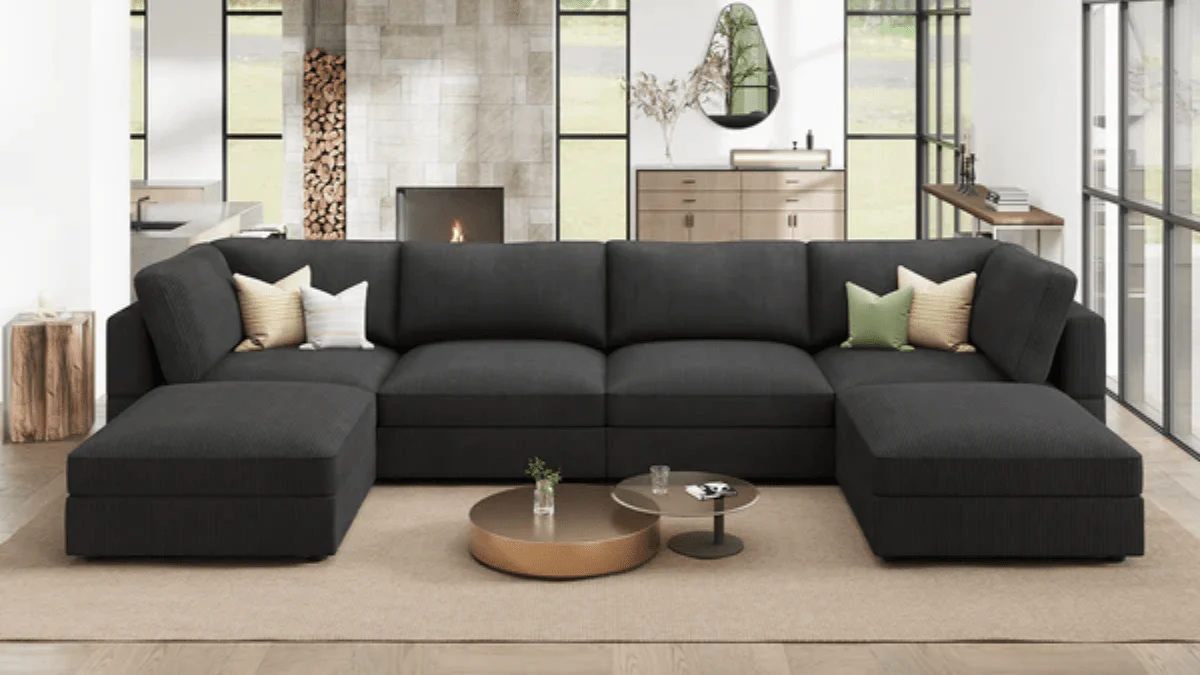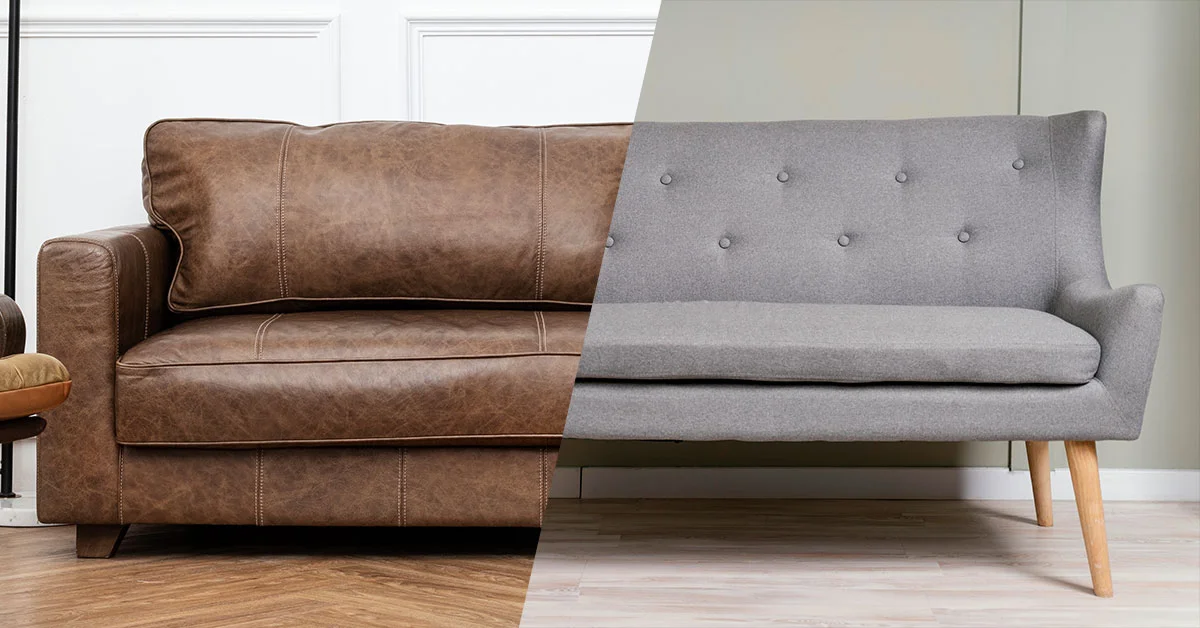When it comes to furnishing your living room the sofa is often the centerpiece. It is where you relax after a long day, entertain guests and even spend quality time with family. Choosing the right sofa can make all the difference in terms of comfort aesthetics and functionality.
Two popular choices that often leave buyers torn are corner sofas and regular sofas. Each has its own strengths and weaknesses and the best choice depends on your space lifestyle and personal preferences. Let’s delve deeper into the differences to help you make an informed decision.
What is a Corner Sofa?

A corner sofa also known as a sectional sofa is designed to fit into the corner of a room. It typically forms an L Shape or a Ushape offering ample seating for multiple people. Corner sofas are versatile and can be a great option for maximizing seating in compact spaces.
These sofas often come in modular designs allowing you to customize the arrangement to suit your room layout.
What Is a Regular Sofa?

A regular sofa sometimes called a straight or traditional sofa is a more conventional option. It usually seats two to three people and comes in a variety of designs and sizes. Regular sofas are ideal for smaller spaces and provide flexibility in terms of placement.
They can be paired with additional seating options such as armchairs or ottomans to create a cohesive living room setup.
Comfort and Seating Capacity

Comfort is a primary factor when choosing a u shaped sofa store. Corner sofas excel in providing generous seating. Their extended chaise sections allow you to stretch out and relax making them ideal for family movie nights or gatherings. A standard corner sofa can comfortably seat four to six people making it perfect for larger households.
Regular sofas on the other hand typically seat two to three people. While they may lack the spaciousness of a corner sofa they often feature plush cushions and ergonomic designs that prioritize individual comfort. If you live alone or have a small family a regular sofa may be sufficient.
Space Utilization

Corner sofas are designed to make the most of your room corners. By utilizing these often overlooked areas they free up the central space creating an open and inviting layout. This is particularly beneficial in smaller rooms or apartments where efficient use of space is essential.
Regular sofas are more versatile in terms of placement. They can be positioned against a wall in the center of the room or even at an angle. However they may not utilize corner spaces as effectively, potentially leaving some areas of your room underused.
Style and Aesthetics

Corner sofas tend to have a modern and contemporary look. Their clean lines and minimalist designs complement open plan living spaces and modern interiors. They are available in a variety of materials colors and finishes allowing you to choose one that matches your decor.
Regular sofas offer more variety in terms of styles. Whether you prefer a traditional Chesterfield with rolled arms and tufted details or a sleek mid century modern design you’ll find plenty of options. Regular sofas are also easier to accessorize with throw pillows and blankets giving you the flexibility to change the look of your living room with minimal effort.
Flexibility and Arrangement

Corner sofas are less flexible in terms of rearrangement. Once placed they are difficult to move due to their size and shape. Modular corner sofas offer some flexibility as individual sections can be rearranged but this feature is not universal.
Regular sofas are much easier to move and rearrange. They can be paired with other seating options such as loveseats, armchairs or recliners to create a seating arrangement that suits your needs. This makes regular sofas a better choice for those who frequently redecorate or rearrange their furniture.
Maintenance and Cleaning

Maintenance is another important consideration. Corner sofas due to their larger size and multiple sections can be more challenging to clean. Crumbs and dust often collect in the crevices between sections requiring more effort to keep them tidy. Regular vacuuming and occasional deep cleaning are necessary to maintain their appearance.
Regular sofas are generally easier to clean and maintain. With fewer sections and crevices they require less effort to keep dust and debris at bay. Most regular sofas come with removable cushion covers that can be machine washed making maintenance straightforward.
Cost and Budget

Corner sofas are usually more expensive than regular sofas due to their larger size and additional features. High End models with premium materials and modular designs can be particularly pricey. However the investment may be worthwhile if you value the extra seating and functionality they provide.
Regular sofas are more budget friendly with a wide range of options available at different price points. Whether you’re looking for a simple and affordable piece or a luxurious designer sofa you’ll find something to suit your budget.
When to Choose a Corner Sofa
- If you have a large family or frequently entertain guests.
- If your living room has a spacious or open plan layout.
- If you want to maximize seating without adding extra furniture.
- If you prefer a modern and contemporary aesthetic.
When to Choose a Regular Sofa
- If you live in a smaller space such as an apartment or a studio.
- If you value flexibility and the ability to rearrange your furniture.
- If you prefer a more traditional or versatile look.
- If you’re on a tighter budget.
Sofas vs. Sectionals

How do you know which is the right fit for you? Choosing the seating option is the most important decision you’ll make for your living room. Too small and you won’t have enough room to seat everyone comfortably; too large and you will interfere with the natural flow of the home. Understand your needs, the space you have to play with and move forward with confidence knowing you’re not going to make costly mistakes when it comes to choosing the right seating for your home.
I design custom homes for a living but realize that not everyone can afford that type of luxury. I want to prove with my article that you can bring high design looks home no matter what your style or budget.
We love to talk about all things design in this article and today’s topic is a polarizing favorite: sofas versus sectionals. It’s a topic that a lot of people get wrong and I’m here to help steer you in the right direction.
The Origins of Sofas and Sectionals

Let first dive into some of the key differences between sofas and sectionals. For a little context:
What is a Sofa?
The sofa has a long history that dates back to 2000 BC in Egypt. The word “sofa” comes from the Arabic word “Safā” and refers to a raised area of the floor covered with cushions, rugs and drapes. In ancient Egypt only the wealthy such as pharaohs could use these luxury lounges while the less wealthy used stone or wooden benches.
Sofas became more popular during the 17th century when the French monarchs decorated their palaces with sofas rich with ornate designs and regal fabrics reflecting status and ultimate comfort.
As the Industrial Revolution progressed production methods improved making sofas more accessible to the general public. By the 20th century significant design innovations and new materials transformed sofas into a wide variety of design styles we see on the market today.
What is the Difference Between a Sofa and a Couch?
An upholstered bench or seat that has arms and a back is called a sofa. A couch which is more of an American English term rhymes with “slouch.” It is one of those snobby interior design vernaculars that I was taught at such an early age in my career and I never forgot it. A couch is an upholstered bench without arms.
What is a Sectional?
Sectional sofas developed in the mid20th century evolving from traditional sofas to meet the changing needs of contemporary living spaces. Sectionals were originally designed to maximize seating and offer flexibility and versatility making them a great option during the 50s and 60s when the rise of open plan living was first introduced.
Unlike traditional sofas which are usually fixed in shape and size sectionals can be arranged in a variety of forms to fit different layouts and needs. This modular design allows for various configurations such as L shapes or U shapes and often includes design features like recliners and chaise lounges.
This adaptability makes them ideal for large gathering rooms, family rooms and multifunctional spaces. Over the years sectionals have become ubiquitous in modern interior design spaces offering both style and practicality.
Choosing the Right Fit – Sofas vs. Sectionals

Knowing all of the endless options out there, how do you know which is the right fit for you? It is not easy but going through this next segment will help you answer a variety of questions to help you narrow down the choices.
Size of Seating Option
When choosing a sofa or a sectional, always start with the most important consideration: the size of the seating option. What size should you get for your space?
A sectional is typically better for a larger space or larger gathering rooms whereas sofas come in so many different sizes and are ideal for smaller spaces. First consider the size and shape of the room. I always start with a sketch of the room. You don’t have to be an artist to do this. Just take out a blank white sheet of paper and start sketching the shape of the room.
A lot of us have abnormal shapes that we were working with and that’s okay. Once you have that shape, the overall measurements for the room subtract a minimum of 36 inches or roughly around 90 cm for a pathway or egress.
This means that you need a minimum of 36 inches to comfortably walk around the furniture whether you have a hallway behind you, a dining area or space for an accent chair.
A sectional is really ideal for a square or rectangular layout whereas a sofa can fit anywhere. If you have an angular room or one with missing corners or even if a big fireplace sits in the corner of the room a sofa is ideal as you can place it anywhere you please.
Function and Lifestyle
The next most important question you’ll answer when it comes to selecting a sofa or a sectional for your space is: What is the function of this seating option? You’ll quickly understand the function of the sofa by determining the location. Is this seating option going in the living room family room den bedroom or home office? Once you figure out the location you’ll determine the needs based on the users of the space.
For instance if you often entertain guests a large sectional can seat a lot of guests without taking up too much room. If you only occasionally have guests a sofa might be a better fit so that you can have more room for additional activities.
Material and Price
Price also plays a significant role in choosing between sofas and sectionals. Sofas often come with more intricate wood frames and upholstery which can make them more expensive. Sectionals due to their modular design might sometimes use less material as they fit into more compact forms.
Style and Aesthetics
A sofa can create more of a formal polished look while a sectional is more relaxed. Consider colors, patterns and textures. Whether you’re a minimalist or maximalist, both can create beautiful spaces.
Customization
Any seating option can be customized in terms of color fabric or material. However sectionals are more customizable due to their modular design. You can mix and match pieces to fit any layout and need.
FAQs
Q. What is the primary difference between corner sofas and regular sofas?
Corner sofas are designed to fit into room corners and maximize seating space, typically shaped like ‘L’ or ‘U’. Regular sofas are traditional sofas that come in various sizes and are more flexible in placement.
Q. Which type of sofa is better for smaller spaces?
Regular sofas are better suited for smaller spaces as they offer flexibility in placement and don’t dominate the room like corner sofas can.
Q. Are corner sofas more expensive than regular sofas?
Yes, corner sofas typically have a higher initial cost compared to regular sofas, though they may offer better value in terms of durability and larger seating capacity.
Q. Can corner sofas be rearranged easily?
Many corner sofas are modular, allowing sections to be rearranged to fit different room layouts. However, their orientation is usually fixed, limiting flexibility.
Q. Do regular sofas provide enough seating for large families?
Regular sofas may provide less seating capacity compared to corner sofas, making them suitable for smaller families or those with less frequent guests.
Q. Which sofa is more comfortable for social gatherings?
Corner sofas are often preferred for social gatherings as they offer a more inclusive and comfortable seating arrangement with everyone facing each other.
Q. Are corner sofas good for open-plan living spaces?
Yes, corner sofas are ideal for open-plan spaces as they act as functional dividers between living, dining, and kitchen areas while providing ample seating.
Q. Can regular sofas fit into irregularly shaped rooms?
Yes, regular sofas are versatile and can fit into narrow or irregularly shaped rooms without overwhelming the space.
Q. What materials are corner sofas available in?
Corner sofas come in a variety of materials, including fabric, leather, microfiber, and other synthetic options, allowing customization to suit different preferences and aesthetics.
Q. Are corner sofas harder to maintain than regular sofas?
Due to their bulkiness and placement against walls or in tight corners, corner sofas can be more challenging to clean and maintain compared to regular sofas.
Q. Can regular sofas be paired with other furniture?
Yes, regular sofas can be easily paired with armchairs, ottomans, and coffee tables to create a cohesive seating area.
Q. Do corner sofas work well in small apartments?
Corner sofas can be overwhelming in small apartments, as their size may reduce floor space and create a cramped feeling. Regular sofas are often more appropriate for smaller spaces.
Q. Are corner sofas stylish for modern homes?
Corner sofas are popular for modern and contemporary homes due to their sleek, stylish design that complements minimalist aesthetics.
Q. Which sofa is more cost-effective in the long run?
While corner sofas have a higher upfront cost, their durability and larger seating capacity may justify the investment over time. Regular sofas offer a more affordable entry point.
Q. Do corner sofas come in different shapes?
Yes, corner sofas are available in various shapes, including ‘L’ and ‘U’ configurations, to fit different room layouts and preferences.
Final Thoughts
The choice between a corner sofa and a regular sofa ultimately depends on your personal needs, the size and layout of your living room and your budget. Corner sofas are ideal for maximizing seating and making efficient use of space while regular sofas offer more flexibility and versatility. By considering the factors outlined in this guide you’ll be better equipped to choose the perfect sofa for your home.
Remember a sofa is a long term investment so take your time to weigh the pros and cons of each option. Visit showrooms, try out different models and visualize how each sofa would fit into your living space. With careful consideration you can find a sofa that not only meets your practical needs but also enhances the comfort and style of your home.





